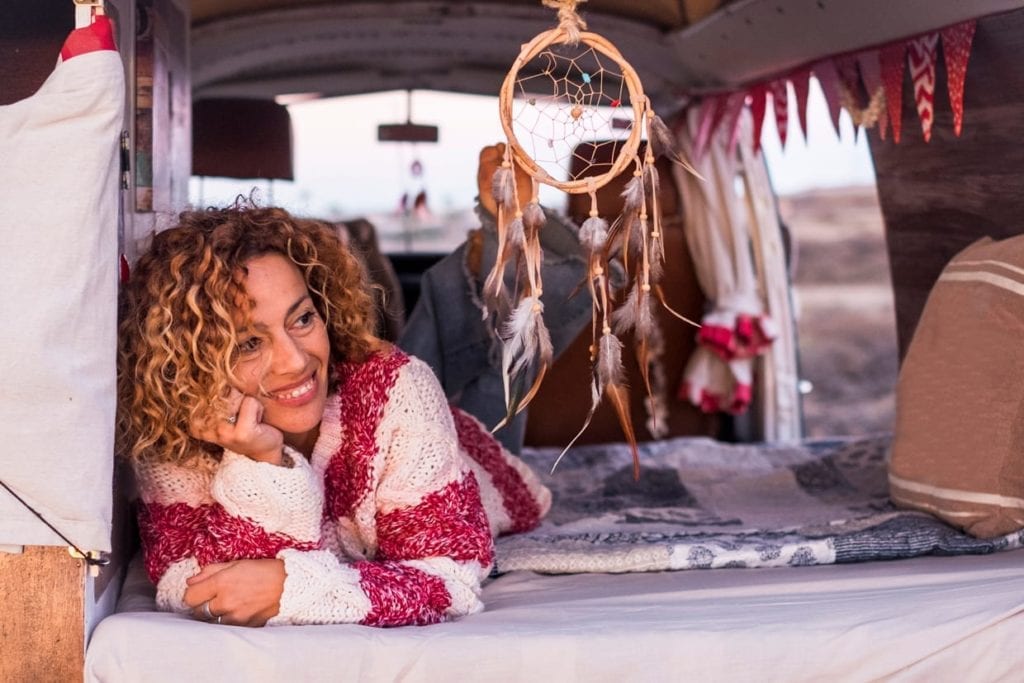It’s that time of year where you often find yourself in transit hubs — hello airports, train stations, and gas stations — as you rack up the miles in holiday travel. At least, that’s how it is in a normal year. In a pandemic year (yes, we’re still very much in one — COVID-19 cases in the U.S. are actually hitting an all-time high) holiday travel isn’t just stressful it could actually be dangerous.
We asked the experts everything you need to know about how to stay safe while traveling this year.
Is it safe to travel at all this year?
In October, Dr. Anthony Fauci, director of the National Institute of Allergy and Infectious Disease, specifically warned against traveling for the holidays. He pointed to the risks of traveling across state lines and gathering indoors — still a big no-no, according to the Centers for Disease Control and Prevention — with people who aren’t in your quarantine bubble.
“I think any travel is a risk,” says Mariea Snell, assistant director of the online doctor of nursing Practice program at Maryville University. But you should think especially carefully about traveling if you’re going to be visiting elderly relatives, who are more susceptible to coronavirus.
What if I get a COVID test?
If you do plan to travel to see loved ones this year, getting a COVID test or quarantining before you do any socializing is safer than walking straight off a plane and hugging your elderly parents — but it’s still not foolproof. “If you test before you go, you are decreasing the risk but not eliminating the risk associated with travel exposure,” says Snell. You might get a negative COVID test before hitting the road only to come in contact with the virus in an airport or gas station on your way. “If you have the option of testing three to five days after arrival and quarantining, that would be the safest option,” Snell says.
How to stay safe on the road
Despite the risks, people will undoubtedly still travel this season. Everyone’s situation is different but the message the experts want you to hear is: don’t take holiday travel lightly this year.
Luckily, if you are going to hit the road, “there are ways to keep the risk low,” Snell says.
Drive if you can
Traveling by car rather than plane, bus or train will limit your potential exposure to viruses. It’s all about environment control: If you’re in your own car, you’re not coming into contact with literally thousands of other people who are passing through airports and train stations. “The best option is to drive yourself,” says Snell. “Some people are even opting to rent RV’s so that they can have the comforts of a bed and bathroom rather than renting hotels and using the gas station or restaurant bathrooms on the road.”
Check airline safety protocols

If flying isn’t an option, there is some good news: “Recent research is suggesting that flying may be a lower risk than we originally thought,” says Snell. “The air in the plan is replaced by outside air approximately every two to four minutes. This coupled with the aircraft HEPA filter makes a significant difference in air quality.”
That said, there is still a risk of flying, so before you book your ticket, make sure you do your diligence and verify what safety protocols airlines are taking. “My suggestion would be to book with an airline that is not selling the center seat and requires all passengers and crew to wear a mask,” says Snell. (Delta, United, and Alaska Airlines have banned over 900 passengers for not wearing masks.) She also recommends booking the window seat. “That would be the location with the least risk,” since you’re less likely to encounter other passengers passing in the aisle and can create more distance.
Rethink your accommodations
On the road, booking an Airbnb can be a safer option than a hotel. Look for one with self-check-in so you don’t have to encounter anyone other than who you’re traveling with. Plus, it gives you the option to cook, rather than having to grab food at a restaurant.

If you do stay in a hotel, look for one “that will let you do an online check-in and use your phone as a key to your room,” Snell says.
Sanitize, sanitize, sanitize
No matter how you’re getting to where you’re going, the fewer things you can touch, the better. The germiest surfaces are door handles and touch screens. Bring disinfectant wipes with you, consider wearing gloves if you’re using public transit, and keep alcohol-based hand sanitizer on you at all times.
Social distance
Once you arrive, the CDC still recommends taking social distancing precautions. Grab some mulled wine and sit outside with your family rather than gathering indoors around the table as this is considered “high risk.” If you are indoors, wear a mask — for Grandma’s safety and your own.
And finally, if you typically stay with family when you visit for the holidays, it may be savvy to book a stay elsewhere this year if you can afford it. This way, you can try to maintain a safe social distance.
We only recommend products we have independently researched, tested, and loved. If you purchase a product found through our links, Sunday Edit may earn an affiliate commission.







